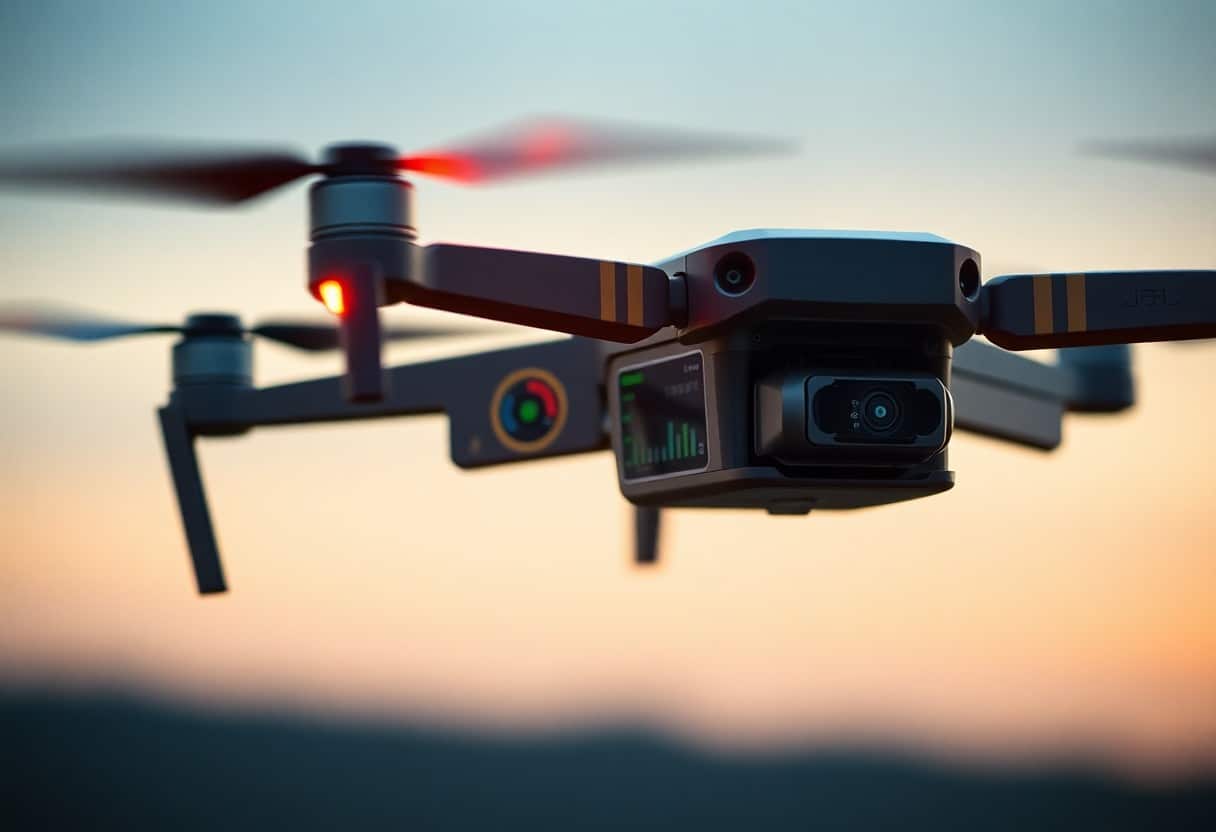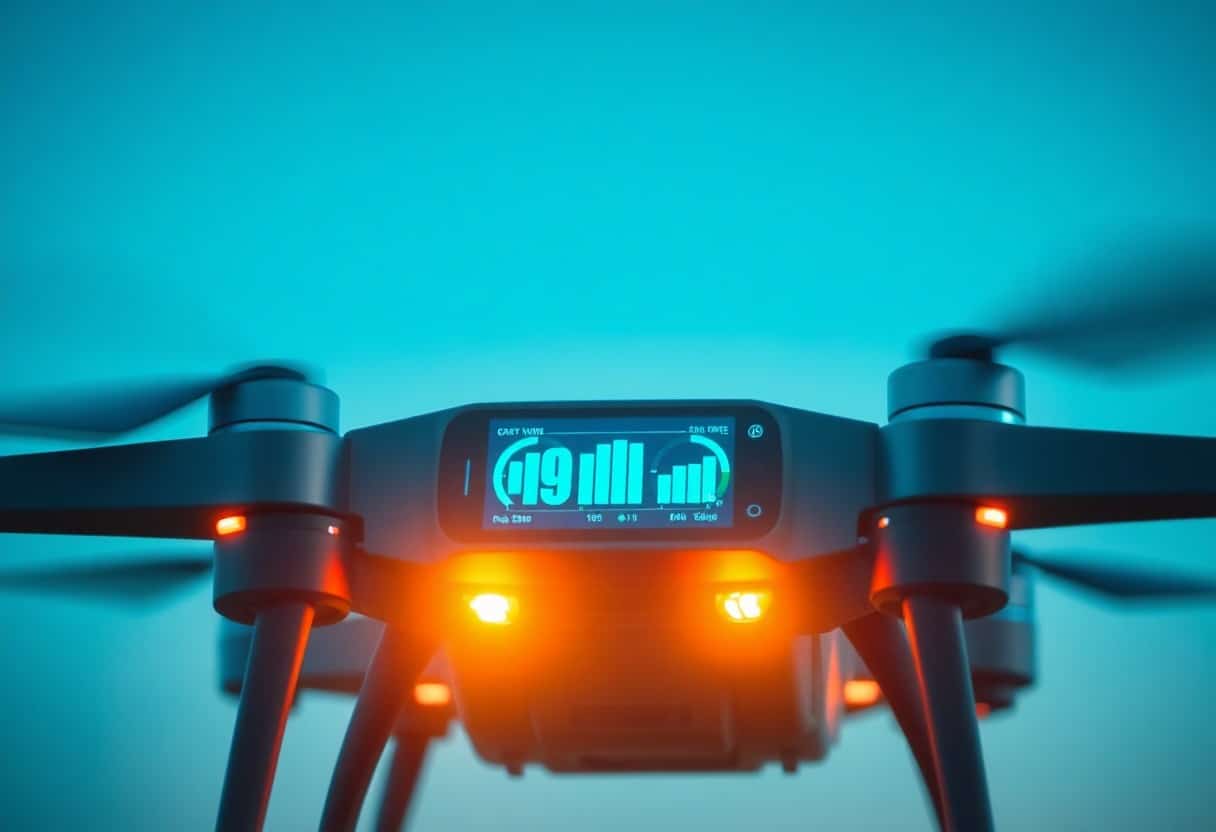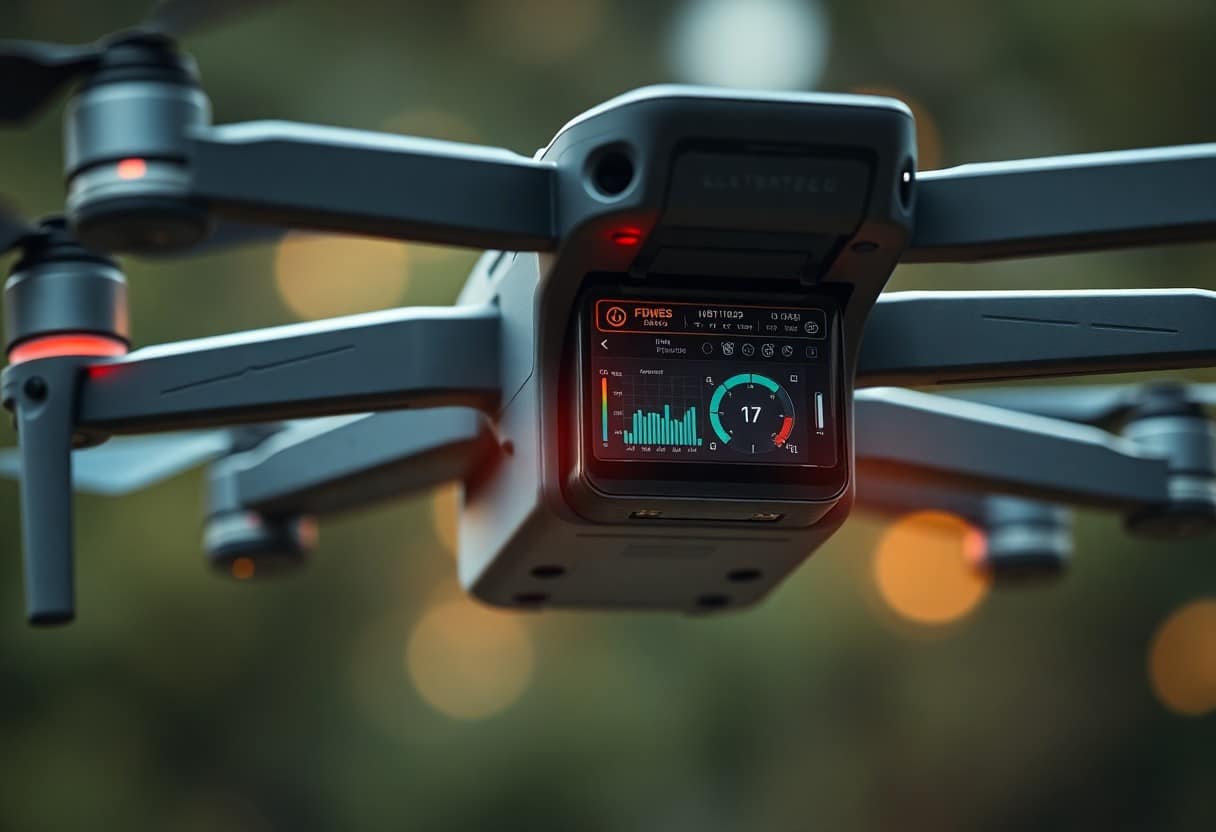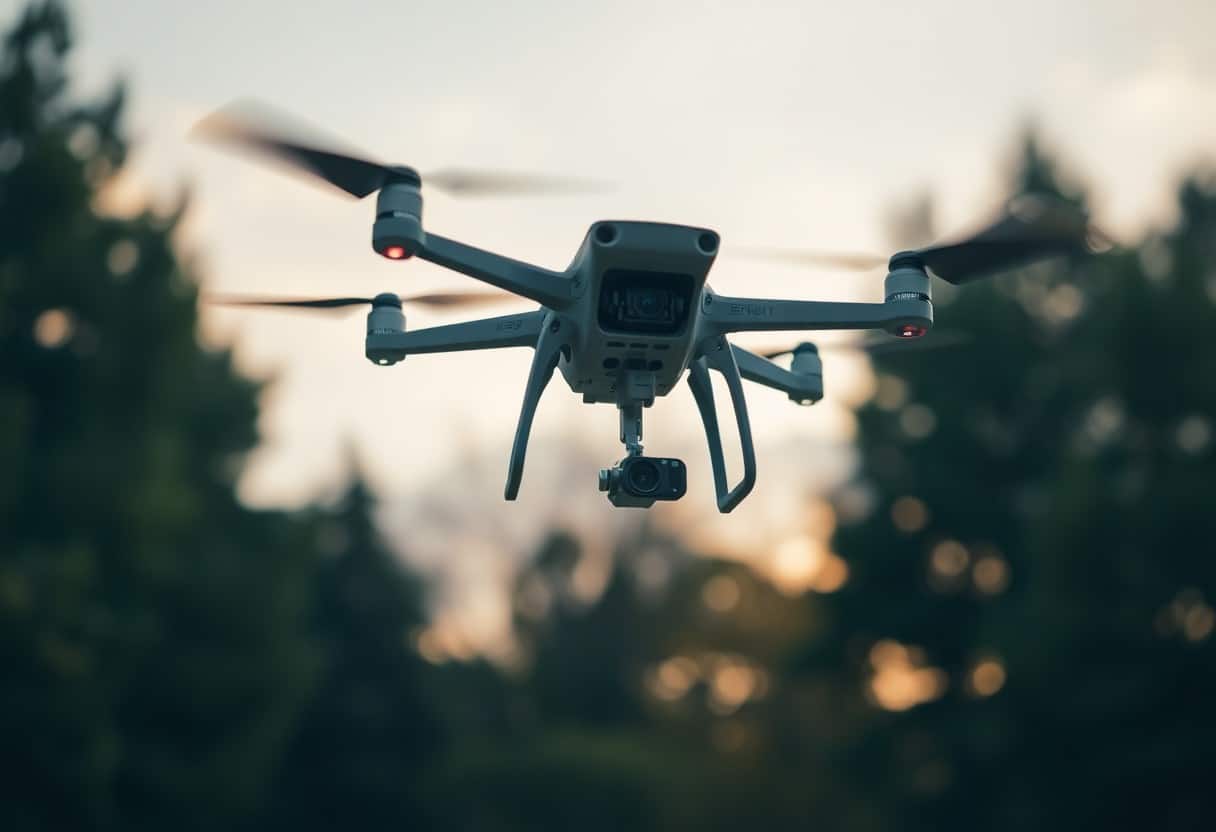Basic Steps for Battery Management in Drone Flight
During the operation of a remote-controlled airplane, theProper Battery ManagementIt is vital to ensure that your flying experience is both safe and efficient. You need to know how toFully charged, maintainedrespond in singingBattery StorageThis article will introduce some basic steps you must follow when flying with a remote control to help you better manage your batteries and improve your overall flight performance. In this article, we will introduce some basic steps that you must follow when flying RC to help you better manage your batteries and improve your overall flight performance.

Key Points:
- Battery selection:Choose the right type of battery to ensure it meets the flight requirements.
- Charge Management:Use a professional charger to keep the battery in a safe charging range.
- Discharge level:Regularly check the discharging status of the battery to avoid over-discharging and affecting the life span.
- Storage conditions:The battery should be stored in a suitable environment, avoiding high temperature or humidity.
- Regular inspections:Regularly check the condition of the battery and connection terminals to maintain good contact.
- Charge cycle:Follow the manufacturer's recommendations for the charging cycle to extend battery life.
- Use monitoring tools:Track battery performance and health in real time with battery monitoring tools.

Understanding Drone Battery Types
Before choosing a drone battery, you need to understand the different battery types and their features. Drone BatteryThere are two main types:Lithium Polymer (LiPo) Batteryrespond in singingLithium Ion Battery. Each type of battery has advantages and limitations that affect your drone's performance and charging needs. Below is a comparison of these two types of batteries:
| Battery Type | Features |
|---|---|
| Lithium Polymer (LiPo) Battery | Lightweight, high discharge rate |
| Lithium Ion Battery | High energy density and long life |
| weights | LiPo is usually lighter |
| Charging Time | LiPo has a shorter charging time |
| safety | LiPo is easy to overcharge |
These features allow you to choose the right type of battery for your needs and preferences.
Lithium Polymer (LiPo) Battery
Lithium polymer (LiPo) batteries are favored by drone enthusiasts for their light weight and high discharge rate. Available in different voltages and capacities, theLiPo BatteryIdeal for applications requiring high performance and short flight times. However, care must be taken as overcharging or puncturing may result inignitemaybeblastThe
Lithium Ion Battery
Lithium-ion batteries outperform LiPo batteries in terms of energy density and life, making them ideal for long-term use. These batteries are typically heavier, but provide a more consistent power output. You can use these batteries for longer periods of time without recharging them as often.Ideal for drones that require sustained flightThe
The high energy density of lithium-ion batteries means that they are able to store large amounts of electrical energy in a relatively small space, which provides longer flight times for drones. In addition, lithium-ion batteries typically have a longer life span and can withstand multiple charge and discharge cycles without losing too much performance. Nevertheless, care should be taken when using lithium-ion batteries.High Temperaturerespond in singingexcessiveIt is important to manage and recharge the batteries correctly to minimize the risk of damage to the batteries.

The Importance of Battery Health Monitoring
In drone flight, monitoring battery health is a critical factor in ensuring safety and efficiency. By regularly checking the condition of your batteries, you can prevent problems from worsening, extend battery life, and avoid dangerous situations at altitude. For detailed maintenance guidelines, seeAs a beginner, what are the key drone flying techniques that would enhance your skills?
Voltage and current monitoring
You need to closely monitor the battery's voltage and current, which is essential to ensure that the battery operates within its normal range. Too low a voltage can prevent the drone from flying properly, while too high a current can damage the battery. Utilizing professional monitoring equipment can help you detect abnormal conditions in a timely manner.
Temperature Management
Monitoring the temperature of your battery is important to ensure its safe operation. High temperatures can cause the battery to overheat, which can lead to serious problems such as fire or explosion. Ensuring that your drone operates within the proper temperature range can effectively minimize such risks.
Temperature Management Tips
| Optimum Operating Temperature | 15°C to 25°C |
| Excessive temperature effects | Battery damage, increased risk of fire |
| Effect of low temperature | Loss of capacity, unable to discharge properly |
appropriateTemperature ManagementSignificantly improves battery life and performance. When using the drone, you should avoid using it in theExtreme high or low temperaturesOperating in an environment that directly affects the health of your batteries and monitoring the temperature of your working environment is key to avoiding overheating or freezing of your batteries. Implementing timely cooling and warming measures can help ensure that your drone operates at its best.
Temperature Management Recommendations
| Use of environmental monitoring equipment | Know your battery temperature at all times |
| Avoid prolonged exposure to the sun | Reduce the risk of overheating |
Charging Agreement
In drone flight, follow the correctCharging AgreementIt is important to ensure the life and performance of your battery. You should use the manufacturer's specified charger and follow the recommended charging times and levels to avoid overcharging or overdischarging, which can damage the battery.
Best Charging Practices
ImplementationBest Charging PracticesIt can significantly improve the performance of the battery. Ensure that the battery is charged at the appropriate ambient temperature and regularly check the health status of the battery to prevent unexpected performance degradation.
Fast vs. slow charging
When it comes to charging speeds, you often need tofast chargerespond in singingslow chargeChoose between them. Although fast charging saves time, it may affect the battery life. It is recommended to choose slow charging in non-emergency situations to protect the health of the battery.
One of the major advantages of fast charging is that it can charge the battery to a high level in a short period of time, which is particularly useful for situations where the drone needs to be activated quickly. However, fast charging producesHeatThis can cause the battery to overheat, which in turn affects its life and performance. In contrast, slow charging extends the life of the battery by charging it more smoothly and reducing the amount of heat generated. Choosing the right charging method for your frequency of use and needs will help keep your drone performing at its best.
Discharge procedure
In drone flight, proper discharge procedures are critical to ensure battery performance and life. You should understand that after each flight, the battery should not be charged immediately, but allowed to cool naturally and discharged within the appropriate discharge range. For more information, please refer toDrone Flying Techniques - 5 Steps to Improve Your SkillsThe
Safe Discharge Level
You must ensure that the battery is operated within the appropriate safe discharge level. Generally, the safe discharge range for lithium batteries should be maintained between 20% and 30%. Excessive discharging may cause damage to the battery, affecting its performance and life.
Impact of Deep Discharge
Deep discharging your battery can causeIrreversible damageThis reduces the battery's storage capacity and may even cause the battery to fail to recharge. This can reduce the battery's storage capacity and even cause the battery to fail to recharge, increasing the frequency with which you have to replace the battery, which can have a significant impact on your flying experience and cost.
Further, when the lithium battery's power is reduced toExcessively low standardsThis can cause chemical reactions within the battery to be affected, leading to safety hazards such as short circuiting or overheating. This danger makes proper management essential. Therefore, you should always monitor power levels and recharge batteries before they become overly discharged to protect your investment and ensure safe flights.
Storage Guidelines
Proper battery storage is key to ensuring drone performance and prolonging battery life. Please followWhich camera settings should you use to get the best drone photography results?It provides optimal storage conditions for the battery and prevents damage.
Short-Term Storage Best Practices
When storing drone batteries for a short period of time, please store them in a cool, dry place, avoiding overheated or humid environments. It is best to keep the battery level between 40% and 60%, which will prevent the battery from being overcharged or overdischarged.Extended Battery LifeThe
Long-term storage considerations
For long term storage, it is recommended to check the battery status periodically and maintain a charge between 40% and 60%. This not only prevents the battery from over-discharging naturally, but also maintains its performance.Ensure that the storage environment is dry and free from direct sunlight.Avoid high and low temperatures that can damage the battery.
In the case of long-term storage, theChoosing the right storage containers is also crucial.. The use of specialized lithium battery storage packs or appropriate fireproof containers can increase safety and prevent accidental damage. In addition, the temperature of the storage environment should be kept between 15°C and 25°C to minimize the risk of battery wear and maintain optimal performance. Keeping your batteries in a well-ventilated area can help improve drone battery life: Important care tips for lithium polymer batteries put into practice.
Care and Maintenance
Maintaining and servicing your batteries is critical during drone flight. Regularly cleaning battery contact points and ensuring that batteries are stored in the proper environment will extend their life. Additionally, following best charging practices and avoiding over-discharge are key to ensuring efficient battery operation.
Regular inspection and testing
You should check and test your battery regularly to ensure that it is in good condition in terms of power, voltage and appearance. The use of specialized equipment can help you test the health of your batteries and identify potential problems before they affect your drone's flight performance.
Handling of damaged batteries
When you find obvious damage to the battery, such as leakage or deformation, stop using it immediately and dispose of it properly. This ensures safety and prevents dangerous situations from occurring.
You should take special care when handling damaged batteries.Damaged batteries may pose a risk of fire or explosion.The batteries should be placed on a fire-resistant material and protective gloves should be worn. Do not dispose of damaged batteries in the regular garbage and seek professional electronic waste recycling organizations for disposal.Do not attempt to repair or recharge a damaged battery.to ensure your safety and the safety of others.
Critical Steps in Battery Management for Drone Flying
Effective battery management is critical in drone flight to ensure your flight safety and extend battery life. First, you should regularly check the health of your batteries and ensure that they are being charged and discharged correctly. Next, avoid over-discharging and choose the right charging equipment to prevent over-charging. Finally, store your battery in the proper temperature and environment to maintain optimal performance. With these basic steps, you will be able to better manage your drone's battery and enhance your flying experience.
FAQ
Q: What is the importance of aircraft battery management?
A: Battery management of your aircraft is critical because it directly affects flight time, safety and performance. Proper battery management extends battery life and prevents unexpected failures caused by over-discharging or over-charging the battery.
Q: How do I check the health status of my battery?
A: Checking the health of your battery can be done by looking at voltage data, using specialized testing tools to measure cell voltage, capacity testing, and observing for signs of expansion or damage. Regular maintenance and inspections are key to ensuring battery performance.
Q: How do I safely charge my drone battery?
A: Choose a dedicated charger and follow the manufacturer's instructions. Charging should be done in a clean, well-ventilated area, avoiding extreme temperatures or humid environments, and monitoring charging conditions at all times.
Q: How should I check the battery before flying?
A: Before flying, check the battery's charge status, the connectors for stability, any signs of damage (such as dents or swells), and make sure the interface between the battery and the aircraft is clean and free of dust.
Q: How to extend the life of drone battery?
A: Ways to extend the life of drone batteries include maintaining proper charging and discharging habits, avoiding over-discharging, storing the batteries at room temperature, and performing regular equalization charging to keep the batteries charged between 40%-70% for long periods of time.
Q: What battery conditions should I be aware of while flying?
A: During flight, pay attention to the battery power display, temperature fluctuations, and any unusual sounds or odors. If you notice any abnormalities, you should land immediately and check the battery status.
Q: How do I dispose of expired or bad batteries?
A: Expired or broken batteries should be disposed of in accordance with local environmental regulations. You can look for specialized battery recycling points or consult professional recycling services to ensure that the impact on the environment is minimized.




